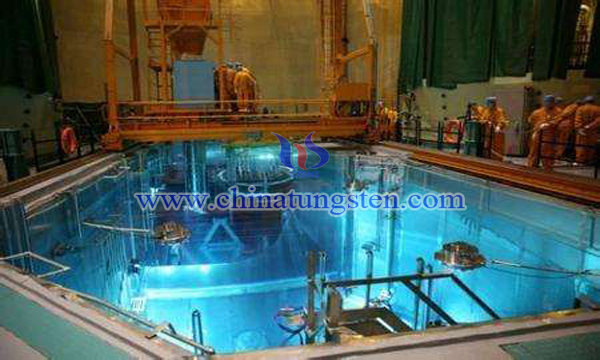Preparation of Tungsten Nickel Alloy Rods for Nuclear Power Plant
- Details
- Category: Tungsten Information
- Published on Tuesday, 06 March 2018 22:58
The power generated by a nuclear power plant reactor is generally controlled by lifting or reducing the control rod components in the reactor core. The fuel assembly of modern reactor core typically uses two types of rod control components to control reactivity, namely the rod and beam control assembly (RCCA) and the ash rod control module (GRCA). Both are made up of a number of neutron absorbers fastened to a common hub disk or a multi - foot frame at the top of its top.

The technology requirements for manufacturing nuclear reverse reactor neutron absorption rods are very high. Generally, the absorption materials require 10~30 2200m/s neutron absorption microcapture cross section, and the supporting pipe material is made of nickel alloy. The inner support tube is closely combined with the main neutron absorption bar to form a composite bar, and the wall of the inner wall is uniform and the dimension precision is high.
There are mainly three ways to make metal composite pipes: one is casting metallurgy technology, the other is to melt the inner supporting tube material, then the casting method is tightly combined with the core rod material, then the composite bar is made by cutting and grinding. This method requires low equipment, but the disadvantage is that in the process of preparation of nickel alloy / tungsten composite bar due to the high melting temperature of nickel alloy (nickel alloy melting temperature> 1200 ℃), easily lead to tungsten material recrystallization (recrystallization temperature> 1100 ℃), resulting in decreased strength of the core rod material, resulting in subsequent processing core rod easy to break, obviously this method is not suitable.
The other method is the method of casing and composite core rod, which is inserted into the tungsten rod nickel alloy casing, inner diameter is slightly larger than the outer diameter of the core rod, and then through the outer mold and pull hard with the composite into one metal casing and the metal mandrel outside closely, forming a composite rod structure. It can be imagined that this method requires high accuracy for the core and metal bushing size, especially for the thin and long thin-walled tube, and the straightness of inner diameter tolerance is higher.
Another method is the powder mold sintering method, which is to clean the tungsten bar and fill the nickel alloy powder evenly in the gap between the tungsten bar and the pressing die. After the pressing die is sealed and placed in the cold statics press, the nickel alloy / tungsten composite rod is obtained and then calcined in the vacuum sintering furnace. Compared with the first two methods, this method of prepressing and re sintering has considerable advantages, one is high precision, and two is the high process and high success rate. The dimensional precision of the finished nickel alloy / tungsten composite bar is high (the dimensional tolerance is + 0.02mm), and the bonding rate of nickel alloy and tungsten bar is up to 100%.
- Tungsten Alloy Manufacturer & Supplier, Chinatungsten Online: www.tungsten-alloy.com
- Tungsten News & Prices of China Tungsten Industry Association: www.ctia.com.cn
- Molybdenum News & Price: news.molybdenum.com.cn
- Tel.: 86 592 5129696; Fax: 86 592 5129797; Email: sales@chinatungsten.com



 sales@chinatungsten.com
sales@chinatungsten.com